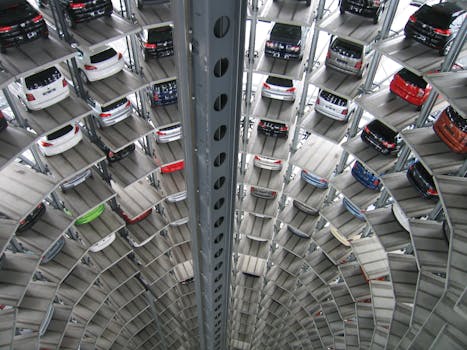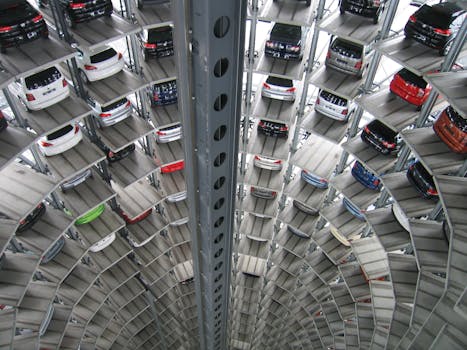5 Essential Components for a Budget-Friendly Smart Home
In today’s world, technology has become an integral part of our daily lives. From smartphones to smart TVs, we are surrounded by devices that make our lives easier and more convenient. One area where technology has made significant advancements is in the realm of home automation. With the rise of smart home devices, it is now possible to control various aspects of your home with just a few taps on your smartphone. However, many people are deterred from building a smart home due to the misconception that it is an expensive endeavor. In reality, with the right components and a little bit of planning, you can build a fully automated smart home on a budget. In this article, we will discuss the 5 essential components for a budget-friendly smart home.
1. Smart Hub
The first and most crucial component of a smart home is a smart hub. A smart hub acts as the central control unit for all your smart devices. It connects to your home’s Wi-Fi network and allows you to control all your devices from a single app on your smartphone. There are many options available in the market, ranging from high-end hubs to budget-friendly ones. Some popular choices include Amazon Echo, Google Home, and Samsung SmartThings. These hubs not only control your smart devices but also act as virtual assistants, allowing you to control your home with voice commands.
2. Smart Lighting
Smart lighting is another essential component of a budget-friendly smart home. With smart bulbs, you can control the brightness, color, and even schedule when your lights turn on and off. This not only adds convenience but also helps save energy and reduce your electricity bill. There are many affordable options available, such as Philips Hue, LIFX, and TP-Link Kasa. These bulbs can be controlled through your smart hub or directly through their respective apps.
3. Smart Plugs
Smart plugs are a cost-effective way to make your home appliances smart. These plugs can be inserted into any standard electrical outlet and allow you to control the power supply to your devices. This means you can turn off your appliances remotely, saving energy and money. Some smart plugs also come with additional features such as energy monitoring, which allows you to track your energy usage. Popular options include TP-Link Kasa, Wemo, and Gosund.
4. Smart Thermostat
A smart thermostat is a must-have for any budget-friendly smart home. It not only adds convenience but also helps save money on your heating and cooling bills. With a smart thermostat, you can control the temperature of your home remotely, set schedules, and even receive energy usage reports. Some popular options include Nest, Ecobee, and Honeywell. These thermostats can also integrate with your smart hub, allowing you to control them through your smartphone.
5. Smart Security System
Last but not least, a smart security system is an essential component of a budget-friendly smart home. With smart cameras, door and window sensors, and motion detectors, you can keep an eye on your home even when you’re away. These devices can be controlled through your smart hub or their respective apps. Some popular options include Ring, Arlo, and Wyze. These systems not only provide security but also peace of mind.
In conclusion, building a fully automated smart home on a budget is not only possible but also a smart investment. With the right components, you can add convenience, save energy, and increase the security of your home. It is essential to do thorough research and compare prices before making any purchases. With the advancements in technology, building a smart home has become more accessible and affordable than ever before. So why not take the first step towards a smarter and more efficient home today?
Maximizing Savings: DIY vs. Professional Installation for Smart Home Automation

Smart home automation has become increasingly popular in recent years, with more and more people looking to make their homes more efficient, convenient, and secure. However, the idea of building a fully automated smart home can seem daunting and expensive. Many people assume that it is only achievable for those with a large budget or the help of professional installers. However, with the right approach, it is possible to build a fully automated smart home on a budget. One of the key decisions to make when embarking on this project is whether to opt for a DIY approach or hire professional installers. In this article, we will explore the pros and cons of each option to help you make an informed decision.
DIY (Do-It-Yourself) smart home automation has gained popularity in recent years due to the availability of affordable and user-friendly smart home devices. With a DIY approach, you have complete control over the design and installation process, and you can customize your smart home to your specific needs and preferences. This can be a great advantage for those who are tech-savvy and enjoy taking on DIY projects. Additionally, DIY smart home automation can be significantly cheaper than hiring professional installers, as you will not have to pay for labor costs.
However, there are some downsides to a DIY approach. Firstly, building a fully automated smart home requires a certain level of technical knowledge and expertise. If you are not familiar with the technology and how it works, you may struggle with the installation process and end up with a system that does not function properly. This can lead to frustration and additional costs to fix any mistakes. Additionally, DIY smart home automation can be time-consuming, especially if you have a large home or complex automation needs. It may also require multiple trips to the store to purchase the necessary equipment, which can add up in terms of time and money.
On the other hand, hiring professional installers for your smart home automation can offer a hassle-free and efficient solution. Professional installers have the necessary expertise and experience to design and install a fully automated smart home that meets your specific needs and budget. They can also provide valuable advice on the best devices and systems to use, as well as troubleshoot any issues that may arise during the installation process. This can save you time and effort, and ensure that your smart home is set up correctly from the start.
However, the main drawback of hiring professional installers is the cost. The labor costs for professional installation can be significant, and this may not be feasible for those on a tight budget. Additionally, you may have less control over the design and customization of your smart home, as the installers will have their own methods and preferences. This may not be ideal for those who want a more personalized and hands-on approach to their smart home automation.
In conclusion, both DIY and professional installation have their own advantages and disadvantages when it comes to building a fully automated smart home on a budget. It ultimately depends on your technical knowledge, budget, and personal preferences. If you are confident in your abilities and have the time and patience to take on a DIY project, then this may be the best option for you. However, if you want a hassle-free and efficient solution, then hiring professional installers may be the way to go. Whichever option you choose, the end result will be a fully automated smart home that offers convenience, efficiency, and security, all while staying within your budget.
Smart Home Hacks: Affordable Ways to Upgrade Your Home with Automation
In today’s fast-paced world, technology has become an integral part of our daily lives. From smartphones to smart cars, we are constantly surrounded by devices that make our lives easier and more efficient. One area where technology has made significant advancements is in the realm of home automation. With the rise of smart home devices, it is now possible to control and monitor various aspects of your home with just a few taps on your smartphone. However, many people are deterred from investing in smart home technology due to the perception that it is expensive. But the truth is, building a fully automated smart home doesn’t have to break the bank. In this article, we will explore some affordable ways to upgrade your home with automation.
The first step to building a fully automated smart home on a budget is to do your research. With so many smart home devices available in the market, it can be overwhelming to choose the right ones for your home. Start by identifying your needs and priorities. Do you want to control your lights and thermostat remotely? Or do you want to monitor your home security? Once you have a clear idea of what you want, you can then start researching the different options available and compare prices.
One of the most cost-effective ways to upgrade your home with automation is to start small. You don’t have to automate your entire home at once. Begin with one or two devices and gradually add more as your budget allows. A good place to start is with a smart speaker, such as Amazon Echo or Google Home. These devices act as a central hub for your smart home and allow you to control other devices with just your voice. They also come with a variety of features, such as playing music, setting reminders, and answering questions, making them a great value for money.
Another affordable way to automate your home is by using smart plugs. These devices can turn any regular appliance into a smart one. Simply plug in your device, connect it to your home’s Wi-Fi network, and you can control it remotely using your smartphone. This is a great option for those who want to control their appliances, such as lamps or coffee makers, without having to replace them with expensive smart versions.
If you’re looking to upgrade your home security, there are also affordable options available. Smart doorbells, such as Ring or Nest Hello, allow you to see and speak to anyone at your door, even when you’re not home. They also come with motion sensors and can send alerts to your phone when someone is at your door. Additionally, smart cameras can be a cost-effective way to monitor your home. Many of these cameras come with features such as night vision, two-way audio, and cloud storage, making them a great investment for home security.
One area where smart home technology can save you money in the long run is with energy efficiency. Smart thermostats, such as Nest or Ecobee, can learn your heating and cooling habits and adjust accordingly, resulting in lower energy bills. They also allow you to control your home’s temperature remotely, so you can turn off the AC or heat when you’re not home. Smart lighting is another energy-saving option. With the ability to control your lights remotely and set schedules, you can ensure that your lights are not left on when not needed, saving you money on your electricity bill.
In conclusion, building a fully automated smart home on a budget is possible with some research and strategic planning. Start small, prioritize your needs, and gradually add more devices as your budget allows. With the right combination of smart home devices, you can upgrade your home and make your life more convenient and efficient without breaking the bank. So why wait? Start building your smart home today!



